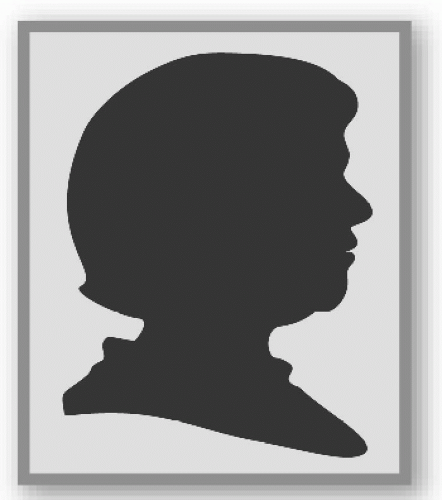Understand the differences and relationship between pharmacotherapy, device-based therapies, and psychotherapy for the treatment of major depression.
Develop strategies for combined or sequenced treatment approaches for major depression.
Enhance skills to negotiate these treatment approaches with patients.
episode began 6 weeks ago. She initially refused medication because she did not like the side effects she experienced while on previous trials of antidepressants (ADs).
Major depressive disorder (single or recurrent, with or without melancholia, with or without psychosis, seasonal pattern)
Bipolar disorder (depressed or mixed episodes)
Dysthymic disorder (less severe, more chronic depressive symptoms)
Cyclothymic disorder (fluctuation between dysthymic and hypomanic episodes)
Other psychiatric disorders (e.g., schizoaffective disorder, depressed type)
Secondary to a general medical condition (e.g., dementia with depression)
Substance-induced mood disorder (e.g., stimulant withdrawal)
or more depressions often precede the development of the characteristic hypomanic or manic episodes that define bipolar disorder. Nevertheless, it is critically important to clarify the diagnosis early in the course because treatment approaches are very different. The use of screening assessments such as the MDQ and the procurement of collateral sources of information can be helpful in this context (see Chapter 8). Another important differential issue is the presence of psychotic symptoms, which usually requires combining standard antidepressants (ADs) plus an antipsychotic. Finally, some patients experience recurrent depression that coincideswith particular seasons. Seasonal affective disorder (SAD) often presents with atypical symptoms (e.g., hypersomnia, carbohydrate craving, and weight gain) and bright light therapy (BLT) may be effective (usually as an adjunct) for standard antidepressant treatments, particularly with the fall-onset pattern.
antidepressant trial). In this context, critical issues to consider are accuracy of diagnosis, adequacy of treatment (e.g., dose, number of sessions, duration), and patient adherence. On the basis of the results of the NIMH-sponsored Sequenced Treatment Alternatives to Relieve Depression (STAR*D) study, after two failed adequate trials the chances of achieving remission fall into the 10% to 20% range. Therefore, there is a significant need to develop more effective strategies in this population.
TABLE 2-1 Symptoms of Depression | ||||||||||||||||||||||||||||
|---|---|---|---|---|---|---|---|---|---|---|---|---|---|---|---|---|---|---|---|---|---|---|---|---|---|---|---|---|
| ||||||||||||||||||||||||||||
unnecessary tragedy. While controversial, the U.S. Food and Drug Administration (FDA)-mandated black box warning for ADs to potentially increase suicidal ideation or behavior in pediatric, adolescent, and young adult populations does underscore the need to monitor these patients very carefully when these agents are prescribed.
TABLE 2-2 Common Issues that Characterize Depression in Different Age-Groups | ||||||||||||||||||||||||||||||||||||||||||
|---|---|---|---|---|---|---|---|---|---|---|---|---|---|---|---|---|---|---|---|---|---|---|---|---|---|---|---|---|---|---|---|---|---|---|---|---|---|---|---|---|---|---|
| ||||||||||||||||||||||||||||||||||||||||||
Genetic risk is supported by family, twin, and adoption studies. Further, interactions with the environment and genetics appear critical to the development of depressive episodes. From another perspective, pharmacogenetics may soon help to predict chances of responding, dose requirements, and predilection to adverse effects (AEs).
Neuroanatomic localization of dysregulated neural circuits is supported by imaging and postmortem studies.
Neurotransmitter systems implicated in depression include the serotonin, nonadrenergic, and dopaminergic systems. Other systems also considered include the cholinergic, glutamatergic, γ-aminobutyric acid (GABA)ergic, histaminergic, and opioid systems.
Neuroendocrine system may also play a role. For example, elevated cortisol levels due to dysregulation in the hypothalamic-pituitary axis (HPA) is an area of study regarding biomarkers for depression as well as novel treatment approaches (e.g., corticotropin-releasing hormone [CRH1] antagonists).
Other hypotheses involve disruption in electrolytes (e.g., K+); biological rhythms (e.g., SAD; and the immune system (e.g., proinflammatory cytokines).
Pharmacotherapy
ADs
Anxiolytics
Mood stabilizers
Antipsychotics (APs)
Device-based therapy
Psychotherapy
Interpersonal psychotherapy (IPT)
Marital/family counseling
Group therapy
TABLE 2-3 Medications for Treatment of Depression | ||||||||||||||||||||||||||||||||||||||||||||||||||||||||||||||||||||||||||||||||||||||||||||||||||||||||||||
|---|---|---|---|---|---|---|---|---|---|---|---|---|---|---|---|---|---|---|---|---|---|---|---|---|---|---|---|---|---|---|---|---|---|---|---|---|---|---|---|---|---|---|---|---|---|---|---|---|---|---|---|---|---|---|---|---|---|---|---|---|---|---|---|---|---|---|---|---|---|---|---|---|---|---|---|---|---|---|---|---|---|---|---|---|---|---|---|---|---|---|---|---|---|---|---|---|---|---|---|---|---|---|---|---|---|---|---|---|
| ||||||||||||||||||||||||||||||||||||||||||||||||||||||||||||||||||||||||||||||||||||||||||||||||||||||||||||
TABLE 2-4 Major Classes of Antidepressants Defined by Putative Mechanism of Action | ||||||||||||||||||||||||||||||||||||||
|---|---|---|---|---|---|---|---|---|---|---|---|---|---|---|---|---|---|---|---|---|---|---|---|---|---|---|---|---|---|---|---|---|---|---|---|---|---|---|
| ||||||||||||||||||||||||||||||||||||||
Stay updated, free articles. Join our Telegram channel

Full access? Get Clinical Tree









